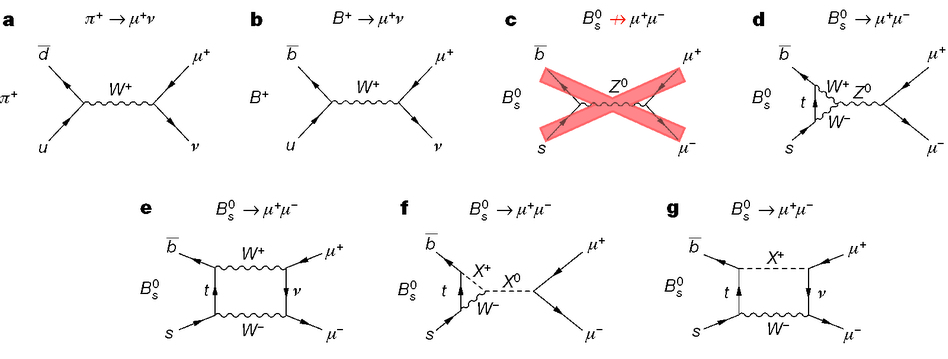LHC observes rare decays with high precision for the first time
Scientists at the Large Hadron Collider (LHC) announced this month the observation, with high precision, of an extremely rare phenomenon: the decay of mesons B0s and B0 into two muons. These mesons can decay in several different ways, and the probabilities of these specific decays are of about 1 per each 250 million B0s mesons produced and of 1 per each 10 billion B0 mesons. Data analysis was made by researchers from CMS (Compact Muon Solenoid) and LHCb (Large Hadron Collider beauty), and included the participation of the São Paulo Research Analysis Center (SPRACE), which is part of the CMS collaboration.
Read the article, published in Nature, by clicking here.
“This was the first time we observed these decays with a statistical significance higher than 6 Sigma, which means that there is only one chance in one billion of the result not being real”, explains Sérgio Novaes, SPRACE coordinator. “This observation is in agreement with Standard Model predictions and is important because it can help to rule out or restrict models beyond the Standard Model which predict different decay rates”.
The observations were made in 2011 and 2012, during the first phase of LHC experiments. This year the accelerator was turned on again for a second phase and should begin data collection in the next few months, this time with an energy of 13 TeV – an increase of 5 TeV with respect to the maximum energy of the first phase.
“With higher energies and luminosities, we will be able to make even more precise measurements,” says Novaes. “The LHC will search for new particles and will test until which point the Standard Model remains valid”.
Beyond the Standard Model
“The Standard Model cannot explain everything,” says Eduardo Pontón, ICTP-SAIFR researcher. “We don’t know, for instance, what dark matter consistes of or why there is an imbalance in the ratio between matter and anti-matter in the composition of our universe. Observations like this one made in the LHC help to establish new boundaries for the Standard Model and new limits for theories that go beyond it and try to explain these phenomena”.
One of Pontón’s research interests is in Composite Higgs Models. According to these theories, the Higgs boson is not an elementary particle – it is composed of other sub-particles. “The Higgs is the only potentially elementary particle observed in nature, to date, that has spin 0, which introduces a fine-tuning problem” he says. “Composite Higgs Models help to explain this issue, among others.”
In addition to further study the properties of the Higgs boson, searching for new particles and for observations that diverge from the Standard Model predictions are among the objectives of this second phase of LHC experiments. SPRACE will not only continue to participate in data analysis and storage, but will also try to increase its role in the CMS collaboration.
“We are starting an instrumentation project to improve detectors used by CMS,” says Novaes. “In the past, we couldn’t observe certain phenomena because we had no sufficiently powerful equipments. Now we have the LHC running at energies that allows us to study phenomena in increasingly greater scales. We face the great challenge of exploring the unknown”.

